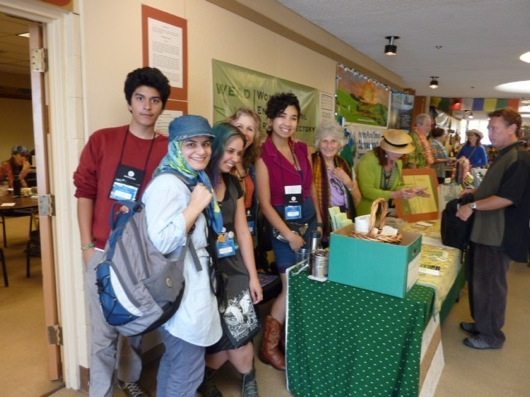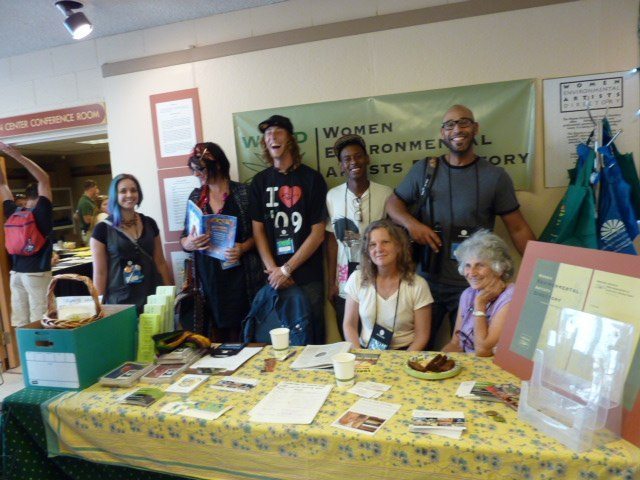As WEAD website director, I attended Bioneers this year to raise awareness about WEAD and it’s mission to provide a space for feminist eco-artists to network and share their political, cultural and ecological art work. I am very proud to report that the interest in women’s EcoArt is growing and that there is a fine line, with lots of potential, between EcoArt and activism.
At the conference, I noticed that many attendees I spoke with and speakers, for instance, Paul Stamets, did not identify as artists but as activists or scientists. What intrigues me about EcoArt is the potential bridge between fields of study. For example, I interpret, Paul Stamet’s Life Box as eco-public art. The Life Box sprouts a variety of trees and once they grow large enough, you decide where to plant them. You can then use the Life Box iphone app to map and name the tree. People around the world can view your tree’s name and location. (1)

Kathryn Miller, Seed Bombing the Landscape in Southern California, 1992 (Photo from Patricia Watts upcoming WEAD Magazine Article: Performance Based Public Art Ecology )
Ecoartists have been using seeds for years to restore degraded land. Kathryn Miller created her Seed Bomb (2) project in 1992. Miller took native seeds, inserting them into soil, and tossed them into places that had been striped of native plants.
Replenishing degraded ecosystems was a hot topic at Bioneers, ranging from community personal level, actions like Paul Stamet’s Life Box, up to international policy making. I was especially inspired by John D. Hiu’s discussion and documentary Lessons Of The Loess Plautea. This film documents the degraded land and the rebirth of the Loess ecosystem with the collaboration between the World Bank and Chinese government (3). Through policy making, the Loess Plataeu ecosystem is able to flourish again. John D. Liu’s imagery is incredible and his documentation of restoration on a national level is a strong addition to the EcoArt film movement.
His plenary got me thinking of community based ecoartists, working with restoration, such as Jackie Brookner. She works closely with local communities to restore their water ecosystems by creating Biosculptures (4), plant based systems that clean polluted water.
There is a fine line between EcoArt and activism and I find that Bioneers provides a playground for scientists, artists, business people, activists, philanthropists, healers, and policy makers. All you self identfying non-artists, come by the WEAD table next year, join our network and lets find a way to collaborate to create masterful EcoArt projects!
(1) http://www.lifeboxcompany.com/
(2) Patricia Watts upcoming WEAD Magazine article
(3) http://eempc.org/film-channel/index.html
(4) https://directory.weadartists.org/jackie-brookner







